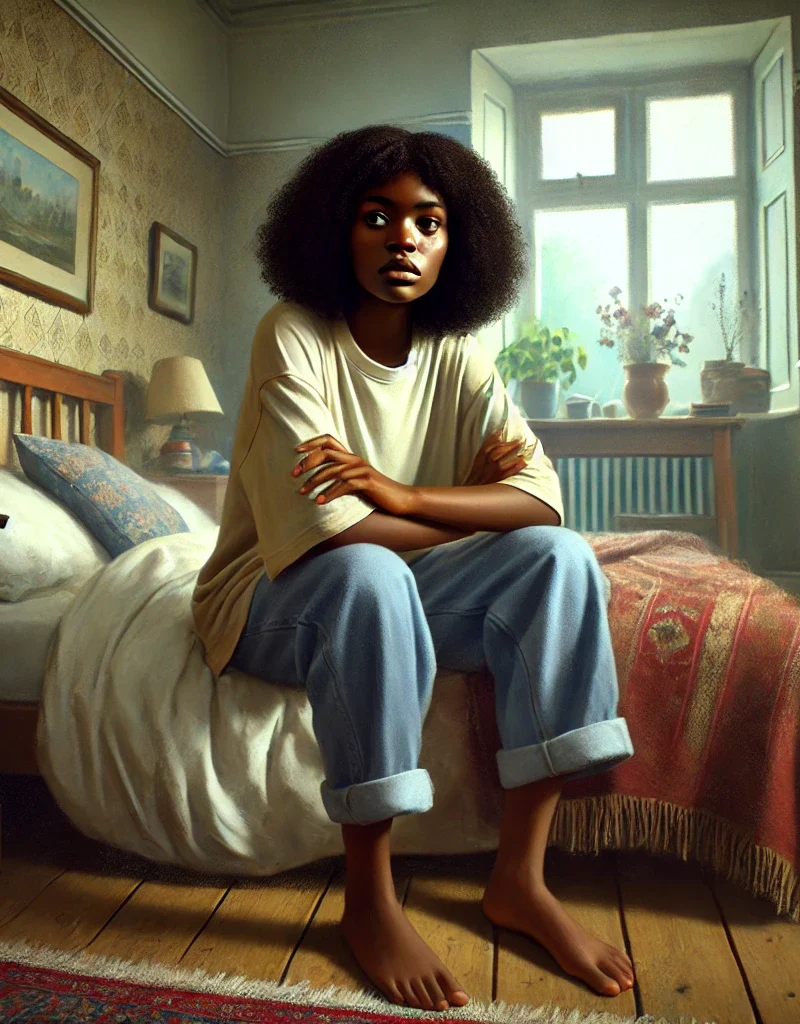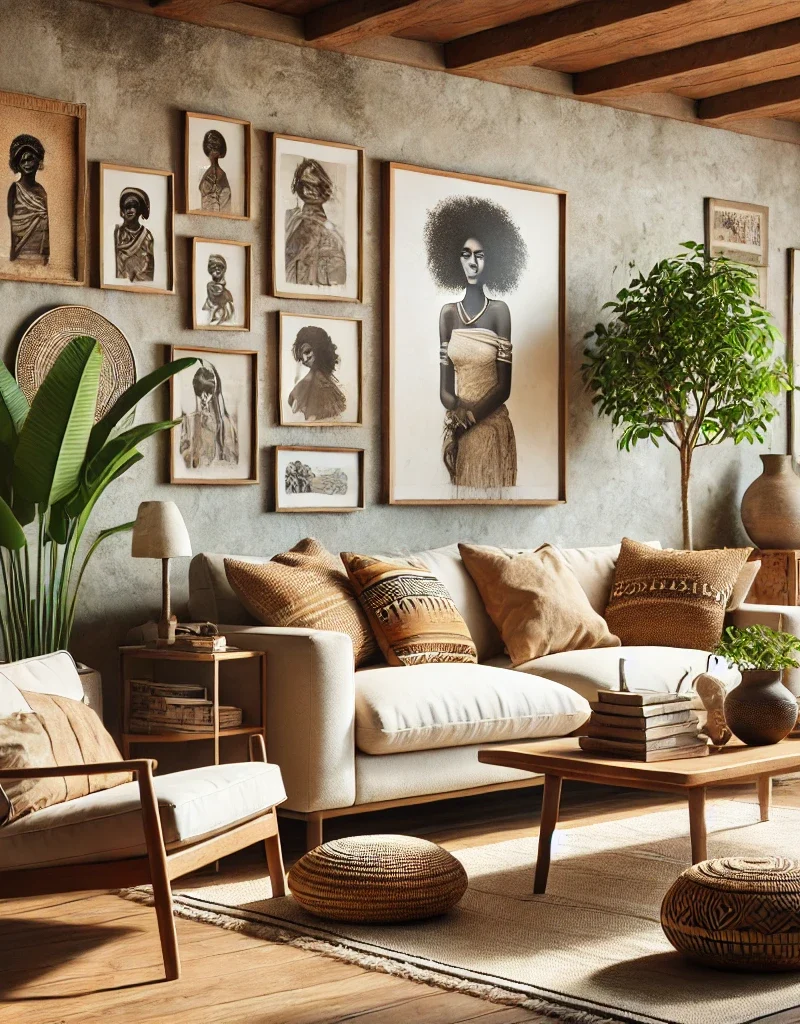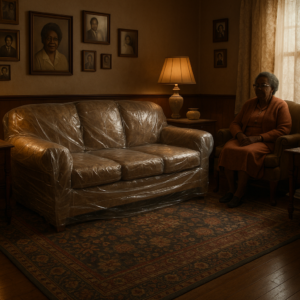Hey love,
When you think of home, what do you see?
Some folks think of perfect white kitchens from magazines. Neutral palettes. Matching sets. Quiet, minimalist spaces.
But for us? For Black folks?
Home has always meant something else entirely.
It was Big Mama’s plastic-wrapped couch no one could sit on. It was the hallway lined with graduation photos and church fans. It was the microwave cart with the squeaky wheel that held sugar, coupons, and every ounce of family pride.
We didn’t just decorate.
We remembered.
We preserved.
We survived—through design.
Our Homes Weren’t Just Homes. They Were Testimony.
Let’s be real. Most of us didn’t grow up flipping through Architectural Digest. We didn’t have interior designers or Pinterest boards. But what we did have was imagination. Innovation. Intention.
Every piece of furniture in a Black home told a story.
-
That peacock chair in the corner? It wasn’t just for prom pics. It was a throne—reclaimed by a people who’ve always deserved one.
-
That China cabinet? No one ate off those plates, and that’s the point. It wasn’t about function—it was about finally having something nice to pass down.
-
The plastic-covered couch? That was our declaration that we’d made it. That we knew how to care for something precious—even if we didn’t get to rest on it ourselves.
Sacred Corners & Soft Altars
We made altars out of TV stands.
Shrines out of dresser tops.
Our ancestors smiled down at us from every corner of the room—framed in gold, wrapped in lace doilies, and sitting next to shell-shaped candy dishes we weren’t allowed to touch.
You couldn’t walk down the hallway without being reminded of your bloodline. Baby photos. Wedding shots. Laminated obituaries. Polaroids that told you who you were before you even asked.
The world rarely saw this as design.
But this was Black memory architecture.
This was us saying, “We were here. And we matter.”
We Made Style from Scraps
The mainstream talks about “upcycling” like it’s new. But we been doing that.
We made bookshelves out of milk crates. Entertainment centers out of cinder blocks and plywood. Our bedrooms were expressions of Black teenage dreams—Aaliyah posters, glow-in-the-dark stars, and matching twin beds that felt like heaven.
We didn’t copy trends.
We set them—from the block, from the barbershop, from the back room where your grandma kept her ashtray shaped like a leaf.
We added drama when they wanted us quiet.
Velvet. Leopard print. Mirror tiles.
They called it “too much.”
We called it personality.
The Bedroom Was the Sanctuary
That headboard with the gold trim and built-in lights? That wasn’t just furniture. That was a safe space. A crown. A kingdom.
Black women sat at vanities every morning transforming themselves with pink lotion, gold earrings, and gospel music humming in the background.
These were places of preparation. Of protection. Of becoming.
We didn’t just rest in our rooms—we restored ourselves in them.
Even the Floor Was Furniture
You ever sleep on a pallet of folded quilts? Eat on the floor around a folding table?
You ever sit in front of the stereo cabinet with the bass bumping, writing your name on cassette tapes so nobody else would touch your playlist?
Every inch of our homes held a memory.
Even the parts the world didn’t consider “important.”
Our Decor Preached
We framed Bible verses on the wall.
Hung portraits of Black Jesus, arms open, eyes like ours.
We had incense burning next to the stereo and vinyl lined up like scripture.
Because our homes weren’t just places to live.
They were places to heal.
And that, baby, is the difference.
So Why Does This Matter Now?
Because the world still tries to erase our design legacy.
Still paints “taste” in beige tones and calls our brilliance “too loud.”
But we know the truth:
Black homes taught the world what it means to make ordinary things sacred.
We stretched budgets and made beauty.
We made room when there wasn’t any.
We raised generations on couches they couldn’t sit on but still felt safe around.
And we need to start documenting that. Celebrating that. Designing with that legacy in mind.
Here’s What I Believe:
🪑 That a folding table can be a throne.
🖼️ That a hallway of family photos is a museum.
🛏️ That your bedroom is a temple.
🌱 That even fake plants carry real energy.
🙏🏾 And that your home should feel like a hug from your ancestors.
If this message spoke to your spirit…
Then you’re already part of the movement.
A movement to bring soul back into our spaces. To honor our elders by how we style our shelves. To make our homes feel like us again.
🖤 Download my free guide: “The Black Woman’s Guide to a Soulful Home”
🖤 Book a Soulful Home Session with me to reimagine your space
🖤 Or follow me on Threads + IG @onechiclook for daily drops of cultural memory and design inspiration
Let’s make room for joy. For rest. For legacy.
Not just in our schedules, but in our homes.
With soul,
Yaneph



Leave a Reply